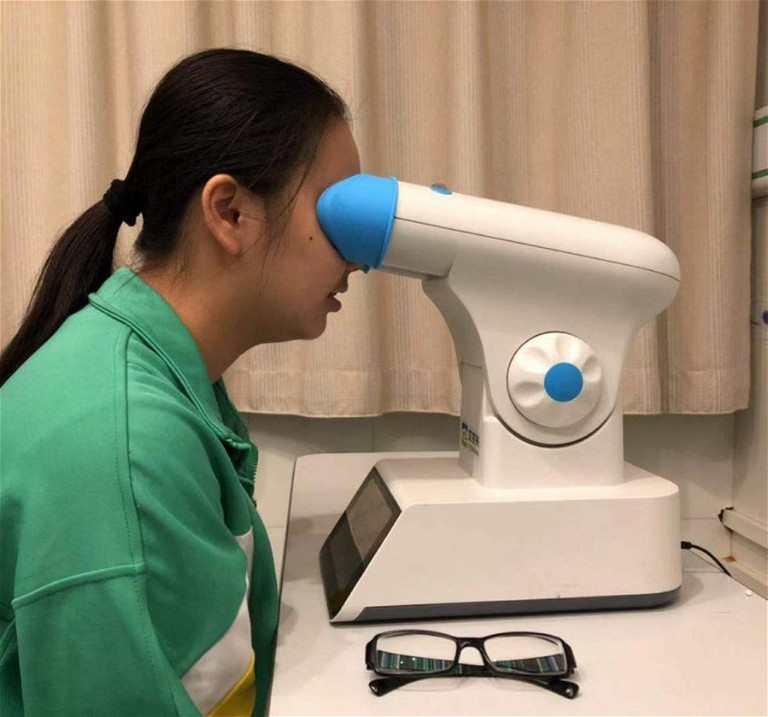minews
Low-Level Red-Light Safety Claims “Inaccurate”: Eyerising International
Australian company Eyerising
International has rejected as “inaccurate” and “misleading”, an article by United States researchers about the safety of low-level redlight ( LLRL) treatment for myopia.
The article, by University of Houston optometry researcher Associate Professor Lisa Ostrin, claims the “excitement over ( LLRLs) results as a myopia treatment may have come too soon, ahead of its proven safety”.1
LLRL is also referred to as repeated low-level red-light (RLRL) therapy.
In the journal article, published in Ophthalmic and Physiological Optics (OPO),2 Assoc Prof Ostrin urged clinicians to “strongly reconsider” the use of LLRL. The article said researchers examined two devices – a Sky-n1201a and a Future Vision – concluding they put the retina at risk of photochemical and thermal damage.
The journal article also frequently referenced the Eyerising myopia management device by Australia’s Eyerising International.
DISPUTED CLAIMS
In a strongly worded release, Eyerising International has disputed claims made in the article, claiming it contained “multiple errors and inaccuracies”.
“The authors incorrectly alleged the Eyerising device did not meet safety standards… the authors tested devices to the wrong ANSI ( American National Standards Institute) standards; the authors failed to mention the Eyerising device’s proven safety record; and the authors inaccurately reported a case study involving the Eyerising device.
“The authors of the OPO article several times referred to the Eyerising myopia management device in a negative and inaccurate manner; despite having not tested the device or contacted Eyerising International for information or comment,” the statement said.
Eyerising International said the company has been given the right of reply in a ‘letter to the editor’ of the OPO journal. In part, this letter reads:
“Despite having not tested the Eyerising device the authors of the OPO article wrote: ‘Of note, for the Eyerising and New Vision instruments used in clinical trials, claims of Class 1 do not appear to be supported by their published measurement data.’
“Eyerising International dispute this statement. Our device does not ‘claim’ a Class 1 designation, it ‘has’ a Group 1 instrument classification, indicating no potential light hazard exists, as defined by the ANSI Z80.36-2021 standard.”
Eyerising International said that Assoc Prof Ostrin and her co-author did not use the latest ANSI standards required of ophthalmic instruments by the United States Food and Drug Administration, but rather used an older ANSI standard developed to protect individuals from accidental exposure to lasers in occupational situations.
“.. unlike the two copycat devices Dr Ostrin tested in her laboratory, the Eyerising device meets the quality, safety, and efficacy standards required by medical regulators in over 30 countries across Europe and APAC.
“The authors allege possible risks associated with LLRL therapy based on their extremely limited laborator y testing of two copycat devices but ignored and failed to mention that the Eyerising device has a proven safety record in both clinical trial and real-world settings.
“The Eyerising device has undergone 10 clinical trials and four real world studies, covering 1,785 patients, with a cumulative clinical trial use of 9.25 years – with zero significant adverse events recorded.
“The device has been used to treat more than 160,000 patients in the real world over the past eight years, and there are currently more than 80,000 daily users. To date, there have only been five cases of significant adverse side effects reported; with no permanent damage recorded,” the Eyerising statement said.
To read the full statement, visit: eyerisinginternational.com/news.
References
1. University of Houston Newsroom, University of Houston Expert warns Red Light Myopia Therapy Can Injure Retina: Popularity of Myopia Treatment May Have Come Too Soon, available at: uh.edu/news-events/stories/2024/january/01292024-ostrin-red-light-therapy-danger-eyes.php [accessed 2 Feb 2024].
2. Ostrin, L.A., and Schill, A.W. (2024). Red light instruments for myopia exceed safety limits. Ophthalmic and Physiological Optics. DOI: doi.org/10.1111/opo.13272.
